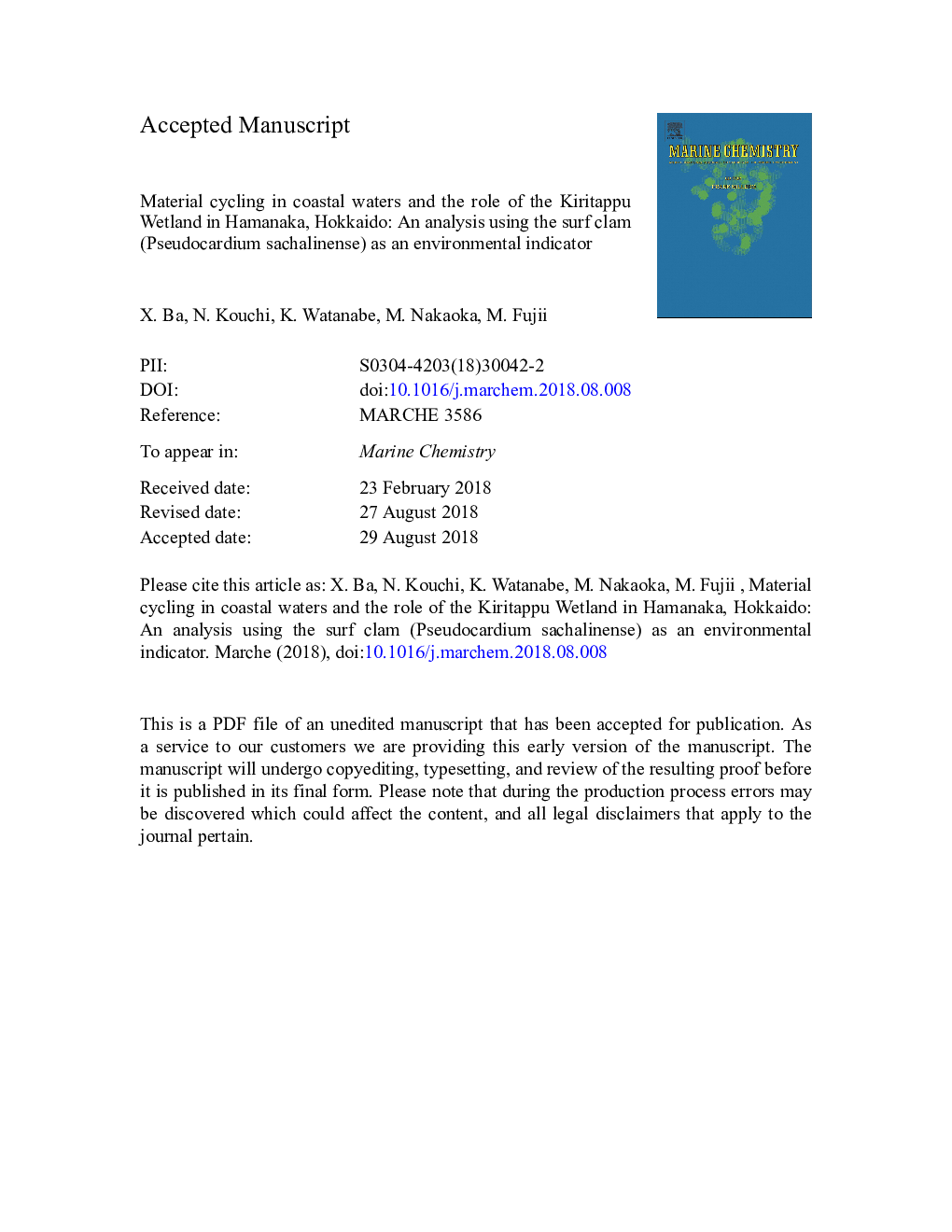| Article ID | Journal | Published Year | Pages | File Type |
|---|---|---|---|---|
| 10154612 | Marine Chemistry | 2018 | 37 Pages |
Abstract
The suspension feeding benthic bivalve surf clam, Pseudocardium sachalinense, which feeds on phytoplankton, benthic microalgae, and detritus in coastal waters, is one of the most important marine resources in Hamanaka, Hokkaido Prefecture, Japan. We measured stable carbon and nitrogen isotope ratios (δ13C and δ15N) and carbonânitrogen (C/N) ratios of surf clam adductor muscle and stomach contents, oceanic particulate organic matter (POM), oceanic sediments, riverine POM, and soil, as well as physical and chemical parameters such as temperature, salinity, chlorophyll-a, and nutrients in Hamanaka from April through September 2015. We also examined the food sources that support the surf clam, the possible connection between wetlands and coastal waters, and the spatial and seasonal variation. Our results showed that the isotope and C/N values of surf clams and oceanic organic matter were significantly different from those of riverine organic matter, and that there were no significant differences among different sites of coastal areas. This means that land-derived organic matter is not a direct food source for the surf clam and does not affect the coastal environment. In addition, benthic microalgae and epiphytes are considered to be the major food sources for the surf clam in all sampling seasons, since they have isotope and C/N values similar to those of the surf clam. The overall results, also with reference to previous relevant studies, imply the importance of conservation of wetlands which buffer excessive inflow of land-derived organic matter that may harm surf clams and the coastal environment.
Related Topics
Physical Sciences and Engineering
Chemistry
Chemistry (General)
Authors
X. Ba, N. Kouchi, K. Watanabe, M. Nakaoka, M. Fujii,
